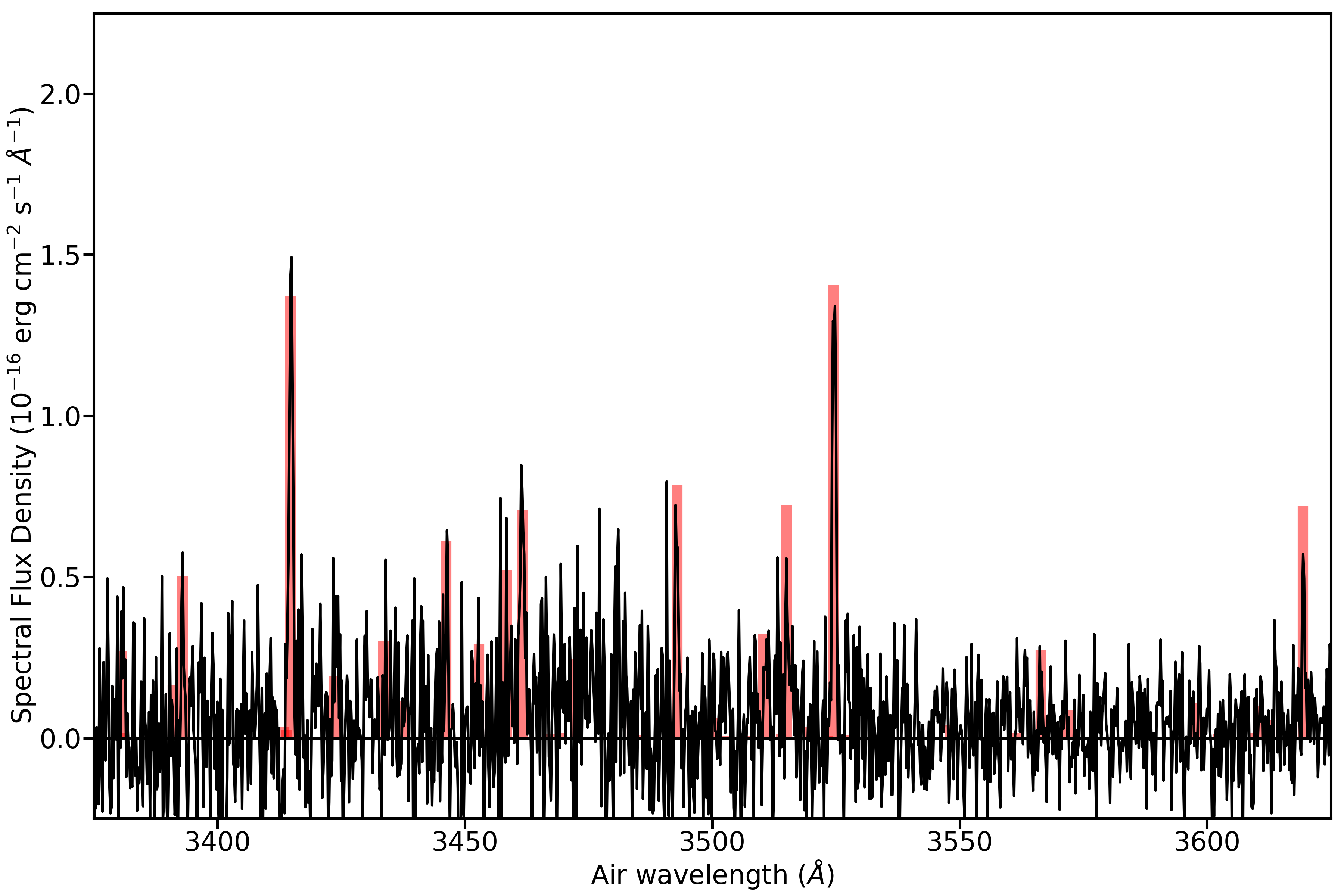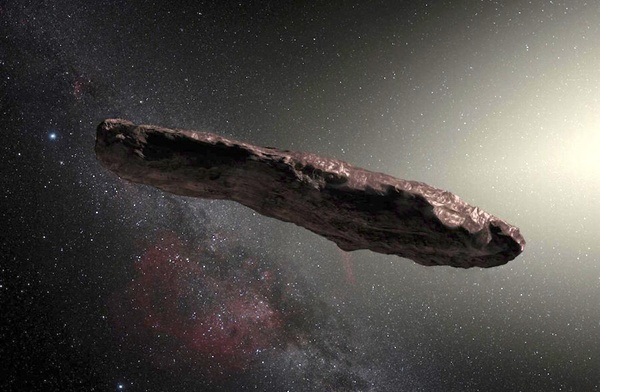
About
about
Our Team
 Wacław Waniak
Wacław Waniak
 Michał Drahus
Michał Drahus
 Piotr Guzik
Piotr Guzik
 Barbara Handzlik
Barbara Handzlik
Students and Collaborators
Contact
Astronomical Observatory of the Jagiellonian University
ul. Orla 171
30-244 Kraków, Poland
NEWS
Nickel atoms detected in the cold gas around interstellar comet 2I/Borisov
 Unbound nickel atoms and other heavy elements have been observed in very hot cosmic environments, including the atmospheres of ultra-hot exoplanets and evaporating comets that ventured too close to our Sun or other stars. A new study conducted by JU researchers reveals the presence of nickel atoms in the cold gasses surrounding the interstellar comet 2I/Borisov. The team’s finding is being published in Nature on 19 May 2021.
Unbound nickel atoms and other heavy elements have been observed in very hot cosmic environments, including the atmospheres of ultra-hot exoplanets and evaporating comets that ventured too close to our Sun or other stars. A new study conducted by JU researchers reveals the presence of nickel atoms in the cold gasses surrounding the interstellar comet 2I/Borisov. The team’s finding is being published in Nature on 19 May 2021.
Interstellar comets and asteroids are precious to science because, unlike millions of minor bodies that formed in our Solar System, they originate from distant planetary systems. Until very recently, the existence of such cosmic vagabonds has merely been an interesting possibility, based on the fact that our Solar System ejected most of the primordial comets and asteroids into the interstellar space in its early days. The objects came to light in 2017 with the unexpected detection of the asteroidal 1I/‘Oumuamua, followed by the discovery of the only known cometary interloper, 2I/Borisov, in 2019. “The scientific value of these objects is absolutely overwhelming, as they carry a plethora of information about their home planetary systems,” says Piotr Guzik of the Jagiellonian University in Poland, author of the new study on 2I/Borisov.
The gasses around 2I/Borisov enabled astronomers to obtain the first precious insights into the chemical composition of an alien icy world. “We were curious what atoms and molecules make up the gasses around 2I/Borisov,” explains study co-author Michał Drahus of the Jagiellonian University. There was only one way to find out. Over three nights in late January 2020, the Very Large Telescope of the European Southern Observatory in Chile was pointed at comet 2I/Borisov to collect the object’s faint light. The incoming photons were directed to the X-shooter spectrograph, which split the light into its constituent wavelengths, enabling the identification of atoms and molecules through their characteristic spectral signatures.
Guzik and Drahus immediately scrutinized the incoming data and realized the existence of unforeseen spectral features. “At first, these features seemed impossible to identify with standard cometary species,” says Guzik. After months of fruitless research, the team was close to giving up. But unexpectedly, a solution appeared on the horizon. “It was literally a ‘Beautiful Mind’ kind of situation, when the wavelengths of these lines materialized in a tabulated spectrum of comet Ikeya-Seki and pointed at atomic nickel,” says Guzik, who first realized the surprising answer. “It didn’t seem to make any sense,” Drahus adds, “but it really did!”
The problem was that comet Ikeya-Seki passed so close to the Sun that the surrounding dust started evaporating, releasing various metals. The same mechanism could not apply to the cold comet 2I/Borisov, which passed too far from the Sun. “The nickel in 2I/Borisov seems to originate from a short-lived nickel-bearing molecule that is incorporated in the cometary ice and sublimates at low temperatures,” explains Guzik. “This is really cool because heavy elements have not been observed in cold cosmic environments before.” According to the study, nickel is not very abundant, accounting for less than 1 in 100,000 atoms in the gasses around 2I/Borisov.
The study was supported by the National Science Centre of Poland through ETIUDA scholarship no. 2020/36/T/ST9/00596 and SONATA BIS grant no. 2016/22/E/ST9/00109, as well as the Polish Ministry of Science and Higher Education through grant no. DIR/WK/2018/12. The project is part of research conducted at the Department of Stellar and Extragalactic Astronomy of the Jagiellonian University’s Astronomical Observatory.
NEWS
In-depth measurements of the interstellar asteroid ‘Oumuamua unveil its turbulent past and verify previous reports
 ‘Oumuamua is the first astronomical object known to science to have entered the Solar System from the interstellar space, having been ejected from its original planetary system. Using the giant Gemini North telescope in Hawaii, a team of scientists led by astronomers from the Jagiellonian University in Kraków conducted an in-depth study of the body. Among other findings, the study revealed that ‘Oumuamua is “tumbling” through space, consistent with a collision in the distant past, as well as verified and expanded upon a number of previous reports. The results have just appeared in the latest issue of Nature Astronomy.
‘Oumuamua is the first astronomical object known to science to have entered the Solar System from the interstellar space, having been ejected from its original planetary system. Using the giant Gemini North telescope in Hawaii, a team of scientists led by astronomers from the Jagiellonian University in Kraków conducted an in-depth study of the body. Among other findings, the study revealed that ‘Oumuamua is “tumbling” through space, consistent with a collision in the distant past, as well as verified and expanded upon a number of previous reports. The results have just appeared in the latest issue of Nature Astronomy.
‘Oumuamua is Hawaiian for “scout.” This unique body was discovered with the Pan‐STARRS telescope on 19 October 2017 and became a scientific sensation nearly immediately after. For astronomers, however, the visit of ‘Oumuamua was hardly a surprise. They have been expecting for a long time already that darting unnoticed among the countless comets and asteroids that formed together with the Sun and planets, there are small objects born on orbits around other stars, from where they escaped to the interstellar space due to various gravitational pulls. In fact, most of the original comets and asteroids that originated in the Solar System met a similar fate in the remote past.
“‘Oumuamua is the long‐awaited first bridge between extrasolar planetary systems and our own Solar System,” said Michał Drahus from the Astronomical Observatory of the Jagiellonian University in Kraków, one of the main authors of the study. “Obtaining detailed information about this object is of fundamental significance to planetary research and astronomy as a whole,” Drahus added.
The scientists began their study shortly after the Pan-STARRS team announced their discovery. “Observations of ‘Oumuamua were very demanding: not only was‘Oumuamua relatively dim, it also moved rapidly away from the Earth and Sun, becoming even dimmer every day,” said Piotr Guzik, a PhD student at the Astronomical Observatory of the Jagiellonian University and another of the main authors of the study. “We knew from the beginning that we would need the most powerfultelescopes in the world to be able to get valuable measurements,” Guzik added. The team was granted 12 hours of observation time on the Gemini North telescope in Hawaii, one of the largest and most advanced astronomical instruments on the planet. The 12 hours were also the longest time ever allocated to observations of ‘Oumuamua on a telescope of this class. “This translated directly into the most extensive and top‐quality observational data,” said Michał Drahus.
In two nights of observations, the scientists took over 400 accurate photographs of the object that, combined together, allowed them to create the most detailed image of the object’s immediate surroundings. They found that ‘Oumuamua lacks a tail and coma, which are typical for comets, thus providing the most compelling evidence that the object is physically an asteroid. “This is a very important result, as we expected most of newly‐discovered interstellar objects to be comets. But now it turns out that asteroids might be more common,” explained Piotr Guzik.
The scientists also used the individual photographs of ‘Oumuamua to monitor changes in its brightness. Such changes occur naturally when an irregularly-shaped object rotates around its axis and thereby reflects a constantly changing amount of sunlight. “Already during our observations, we noticed that the range of changes in ‘Oumuamua’s brightness was very high. However, it took precise measurements before we could learn the true scale of the phenomenon,” said Guzik. The scientists found out that ‘Oumuamua’s brightness changed as much as eleven-fold during a full rotation, which was higher than previously thought and never seen among Solar System bodies. The observed oscillationsin brightness can provide valuable information about the shape of the object, but unravelling this information is far from easy. It was time for advanced computer modelling, performed by Wacław Waniak from the Astronomical Observatory of the Jagiellonian University, co‐author of the study. “If the changes in brightness are caused by the shape of the object, then the object must be highly elongated, though not necessarily as much so as the previous, simplified, calculationssuggested,” said Waniak. “Even an elongation ratio of 5:1 is enough to explain the observed oscillations.” The team also determined that a day on ‘Oumuamua lasts about 7.5 hours, the equivalent size of the object is only 150 meters, and its density – contrary to previous reports by other teams – may not be different from the typical density of Solar System’s asteroids.
The high‐quality observational data indicated an imperfect repeatability of the changes in brightness between the subsequent rotations of the body. “Once we excluded other possibilities, we concluded that ‘Oumuamua does not rotate smoothly, but rather, it ‘tumbles’ through space,” said Michał Drahus. “Such a state can last hundreds of millions or even billions of years, and indicates that ‘Oumuamua most likely underwent a collision in its original planetary system in the ancient past,” he added. The “Scout” tells us that collisions in extrasolar planetary systems might be quite common, as was the case during the very beginnings of the Solar System.
The visit of ‘Oumuamua has opened a completely new chapter in planetary astronomy. “We are extremely grateful to the Gemini observatory for granting us such a generous amount of observation time, which gave us an opportunity to take part in this groundbreaking research,” said Piotr Guzik.
The results of the team’s study were published on 1 May this year in the journal Nature Astronomy. The study was conducted with significant financial support from the Polish National Science Centre as part of the SONATA BIS program (Project No. 2016/22/E/ST9/00109). The project is part of research conducted at the Department of Stellar and Extragalactic Astronomy of the Jagiellonian University’s Astronomical Observatory.